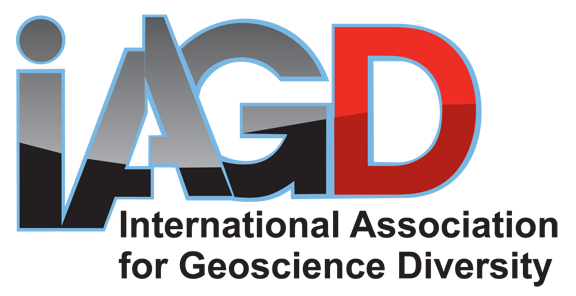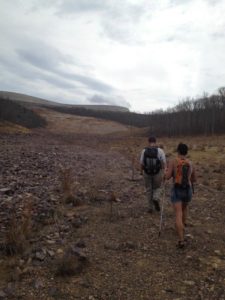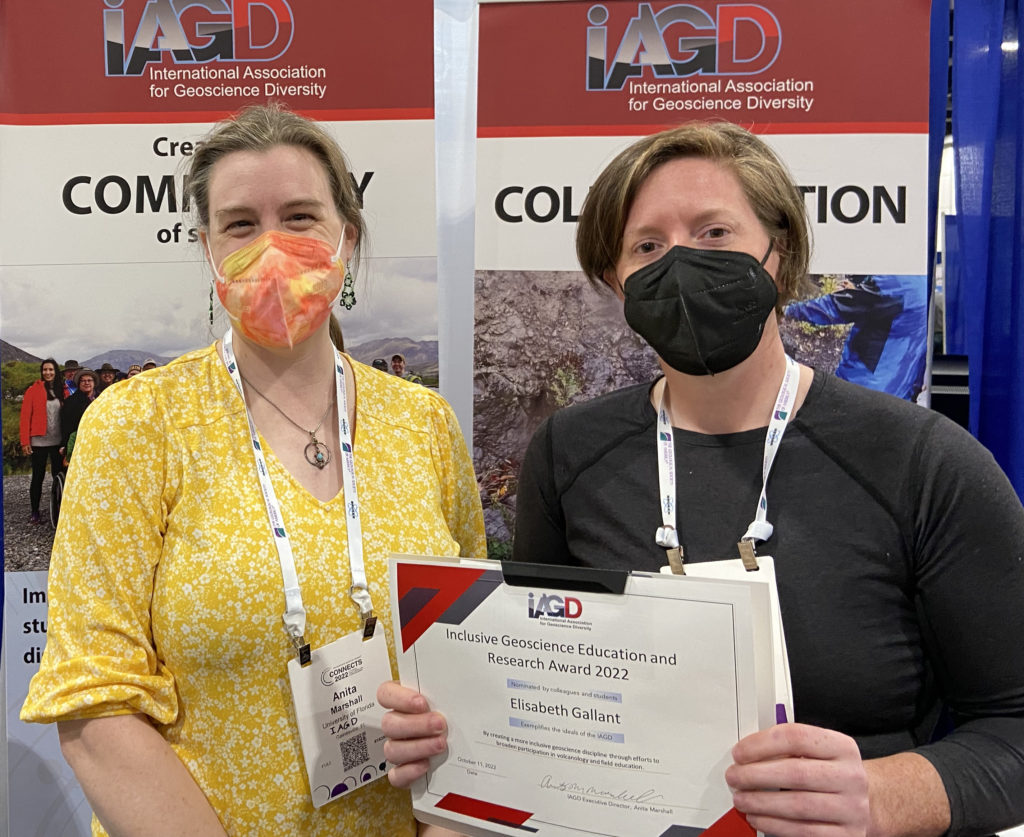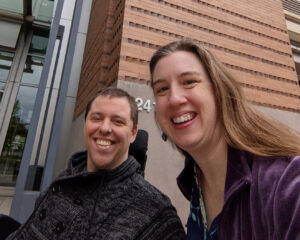Columbia, MO – Recently, Gina Ceylan, IAGD member and blind doctoral student at the University of Missouri participated in a petrology field trip and documented her experience through pictures and the following story:
Although challenging, field studies are among my most engaging and treasured geological experiences. Last weekend I joined an igneous/metamorphic petrology field trip to the St Francois Mountains in south east Missouri and it was phenomenal.
Pilot Knob is a huge hill between the Butler Hill and Taum Sauk calderas, famous for its iron ore deposits. It was the sort of fabulous trudging around steep, pathless, rocky slopes that is ubiquitous in field geology, and I have very little light perception left, so it was a good challenge.
Trekking poles are extremely helpful. In the past, I’ve hiked with my cane, using it as both a hiking stick and a probe to gage the terrain. This is tough on the cane, but definitely do-able. Having the trekking poles is much better, like having two canes that are actually meant for clambering around rocks. When you can’t see where you’re going, the extra stability, leverage, and tactile feedback of the surroundings is crucial.
It’s absolutely essential to have friends looking out for you. If you hike behind someone, you can listen to and follow their steps, as well as their tips as to what you’re about to encounter (e.g. there’s a drop on the left, gets steep here, big step up). It’s all right if there’s too much or too little detail at first, just communicate and they’ll get the hang of it. I also tend to work with multiple people or switch which sighted friend I’m hiking with occasionally, so that one person doesn’t have to be responsible the whole time.
Elephant Rocks State Park is an old quarry where enormous, rounded boulders of Graniteville granite are exposed. These are very tactile, very interesting and also climbable. They actually have a braille trail at the park, with informative braille and large print signs connected by rope, and scruffy Astroturf in front of each one.
The Royal Gorge and Taum Sauk rhyolites are big, roadside outcrops with all sorts of interesting features- some of which are tactile, and some of which are highly visual. With practice, there are all sorts of geologic features you can “get a feel for”, and this is a really important skill to develop. Equally important, is the ability to get visual descriptions out of other students. Having others pay attention to details of what they are seeing, and communicate it as clearly as possible doesn’t just help you put pieces of the puzzle together, it really helps them too. Then, when you’ve compiled you’re visual and non-visual evidence, you can work on the interpretation ideas together. There is a Very Important condition that makes this work well- you need strong background knowledge. If you know your stuff (mineral assemblages, textures, etc) and what they tell you, it is possible to recognize the “spectacular eutaxitic structures” when you hear them. Understanding rock characteristics and their implications allows you to ask good questions, and in my experience, makes the field a lot richer. I usually keep a small digital recorder on me as well, to catch descriptions and discussions for later. I have not experimented with using my tactile sketchpad in the field, but I bet it would work.
Johnson’s Shut-ins State Park scour hike (Image 1), which goes through a variety of units exposed by a damn breech in 2005, is a long walk though loose cobbles and creeks followed by a fun, steep slope. There were some fabulously tactile ripple and scour marks in the sandstone (Image 2). Anytime you get your hands on some structures like this, it really brings the paleo-environment to life. Hughes Mountain with its “devil’s honeycomb”, (Image 3) columnar jointing, was also very accessible, with a whole portion of the hilltop covered in awesome hexagonal columns. By this time, I had the trekking poles all figured out (Image 4), and friends to follow worked well, even after sunset.
If you just go for it, and don’t worry too much about a few little stumbles and scratches, it’s totally worth it.









